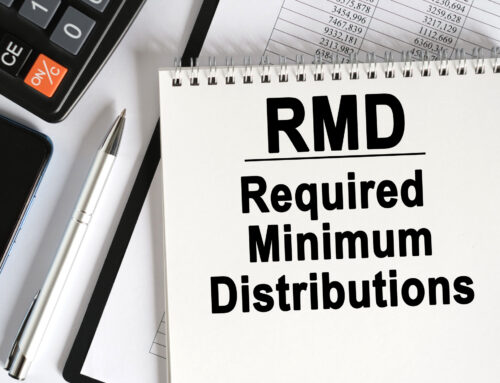There’s evidence to suggest that we might be experiencing historically low tax rates right now. The Tax Cuts and Jobs Act will expire in 2025 or possibly sooner if there’s a leadership change in Washington. By the end of the year, total government debt is expected to almost equal the size of the U.S. economy.[1] This is one trend to keep an eye on when planning for retirement since taxes could rise in the future to pay for increased spending now. One popular long-term tax minimization strategy is to use a Roth IRA. However, there are income limits preventing many people from investing in a Roth.
Roth IRA Income and Contribution Limits
The traditional IRA and Roth IRA contribution limit for 2020 is $6,000. Workers over 50 can contribute an additional $1,000 for a total of $7,000 per year.[2] Single filers with a modified adjusted gross income (MAGI) of over $139,000 and married couples with a MAGI of over $206,000 don’t qualify to contribute to a Roth IRA in 2020.[3] And, you cannot contribute the full amount if you make under $10,000.[4] Although you should seek out specific strategies from a professional, here is information on Roth IRA strategies for those whose income disqualifies them from contributing directly.
Find Out If Your Company Offers a Roth 401(k)
There is no income limitation to participate in a Roth 401(k). A Roth 401(k) allows you to contribute after-tax dollars and withdraw money tax-free later on.[5] One benefit of a Roth 401(k) is that you can contribute as much as you can to a traditional 401(k). Workers under age 50 can contribute up to $19,500, and workers 50 and older can contribute up to $26,000 for 2020. You can withdraw money penalty-free as long as the account has been held for at least five years, and the owner is at least 59 ½ or has a qualifying disability.[6]
Roth Conversion
You have the option to convert funds from a traditional IRA, 401(k), or similar qualified retirement account into a Roth IRA no matter your income. In this case, you would pay tax on the funds converted and then be able to withdraw them tax-free later on, similar to a Roth 401(k). Another benefit of a Roth IRA is that it’s never subject to Required Minimum Distributions (RMDs)[7], which have the potential to increase a retirees’ tax burden. Keep in mind that Roth IRA conversions are now irreversible, and that money can’t be withdrawn penalty-free until five years after it’s converted, and typically until age 59 ½.[8]
Spousal Roth IRA
Since you can only contribute earned income to a Roth IRA, married people who aren’t working for income may think they don’t qualify for a Roth IRA. But, a working spouse may be able to contribute to a Roth IRA on behalf of their non-working spouse if they file taxes jointly. Spousal IRAs are not joint accounts; they are two separate Roth IRAs set up in each spouse’s name. If the working spouse also contributes to his or her own Roth IRA, their earned income must equal or exceed the total amount contributed to both IRA accounts[9]. Note that spousal IRAs are still subject to the regular income limits.
If we’re enjoying historically low tax rates right now, should you take advantage? A financial advisor can help you create a long-term tax minimization strategy as part of a comprehensive retirement plan. Contact us to find out how we can create a plan to fit your unique needs.
[1] https://www.wsj.com/articles/u-s-debt-is-set-to-exceed-size-of-the-economy-for-year-a-first-since-world-war-ii-11599051137
[2] https://www.irs.gov/retirement-plans/plan-participant-employee/amount-of-roth-ira-contributions-that-you-can-make-for-2020
[3] https://www.investopedia.com/terms/r/rothira.asp
[4] https://www.irs.gov/publications/p590b
[5] https://www.irs.gov/retirement-plans/roth-comparison-chart
[6] https://www.irs.gov/retirement-plans/plan-participant-employee/retirement-topics-required-minimum-distributions-rmds
[8] https://www.irs.gov/retirement-plans/plan-participant-employee/retirement-topics-ira-contribution-limits







